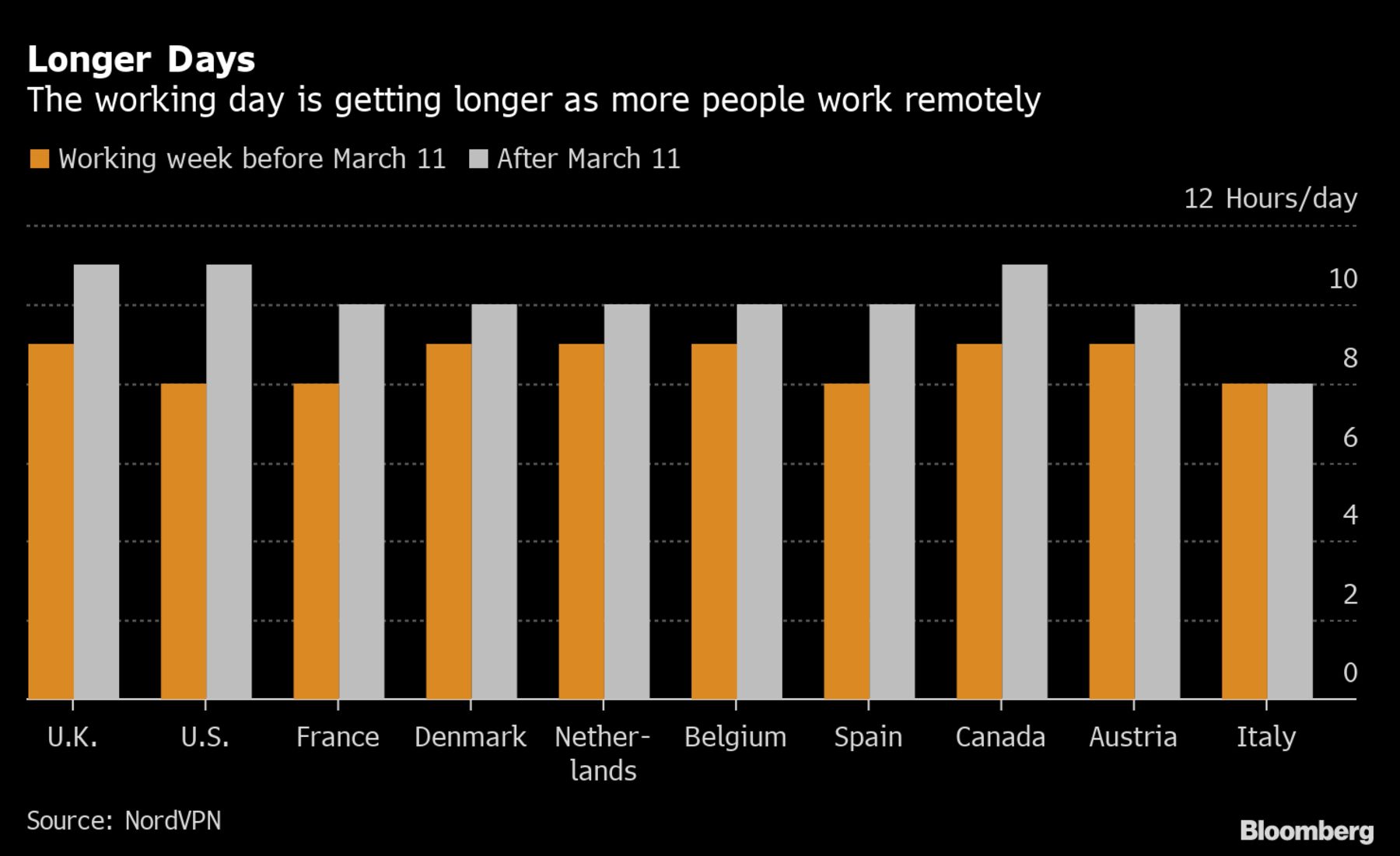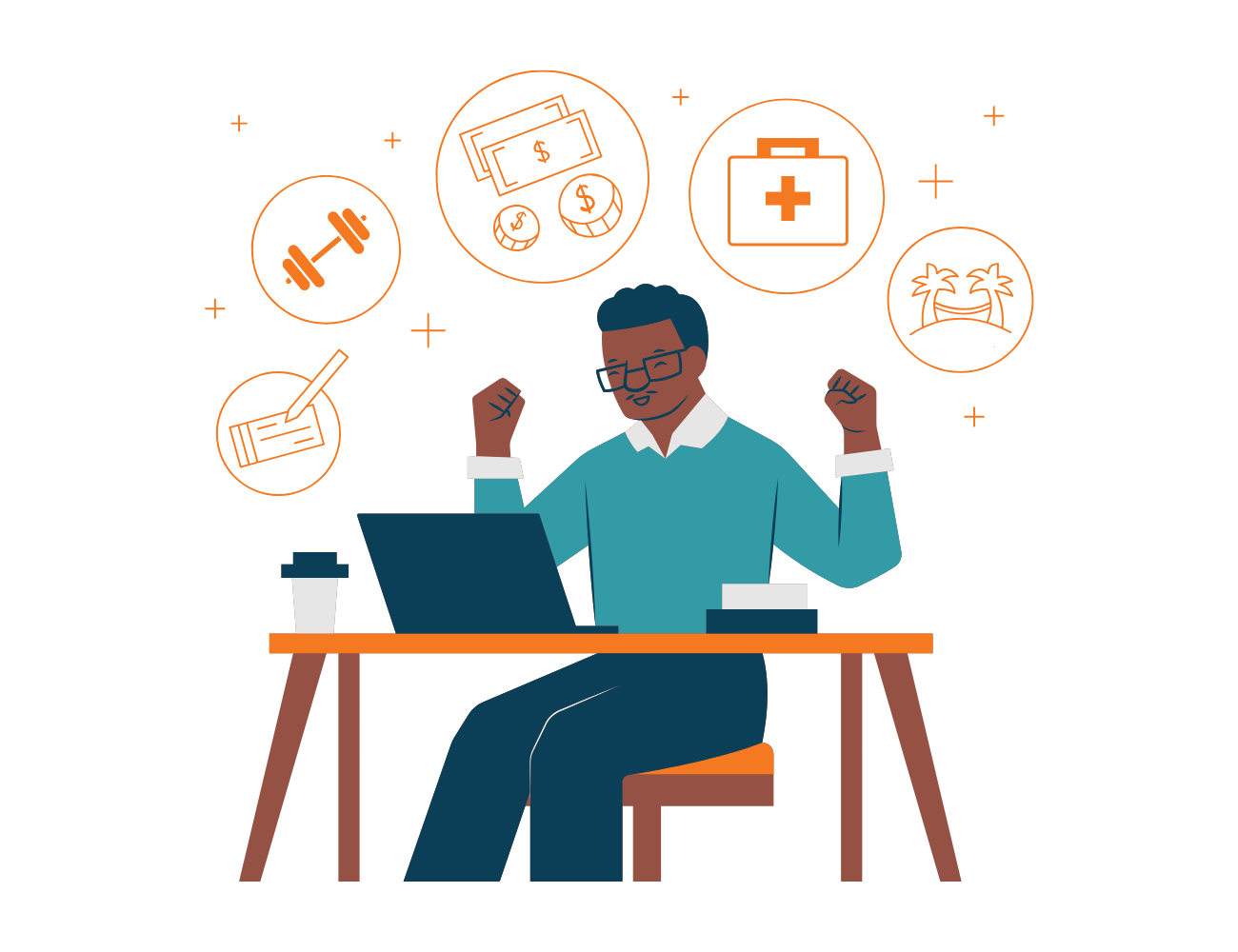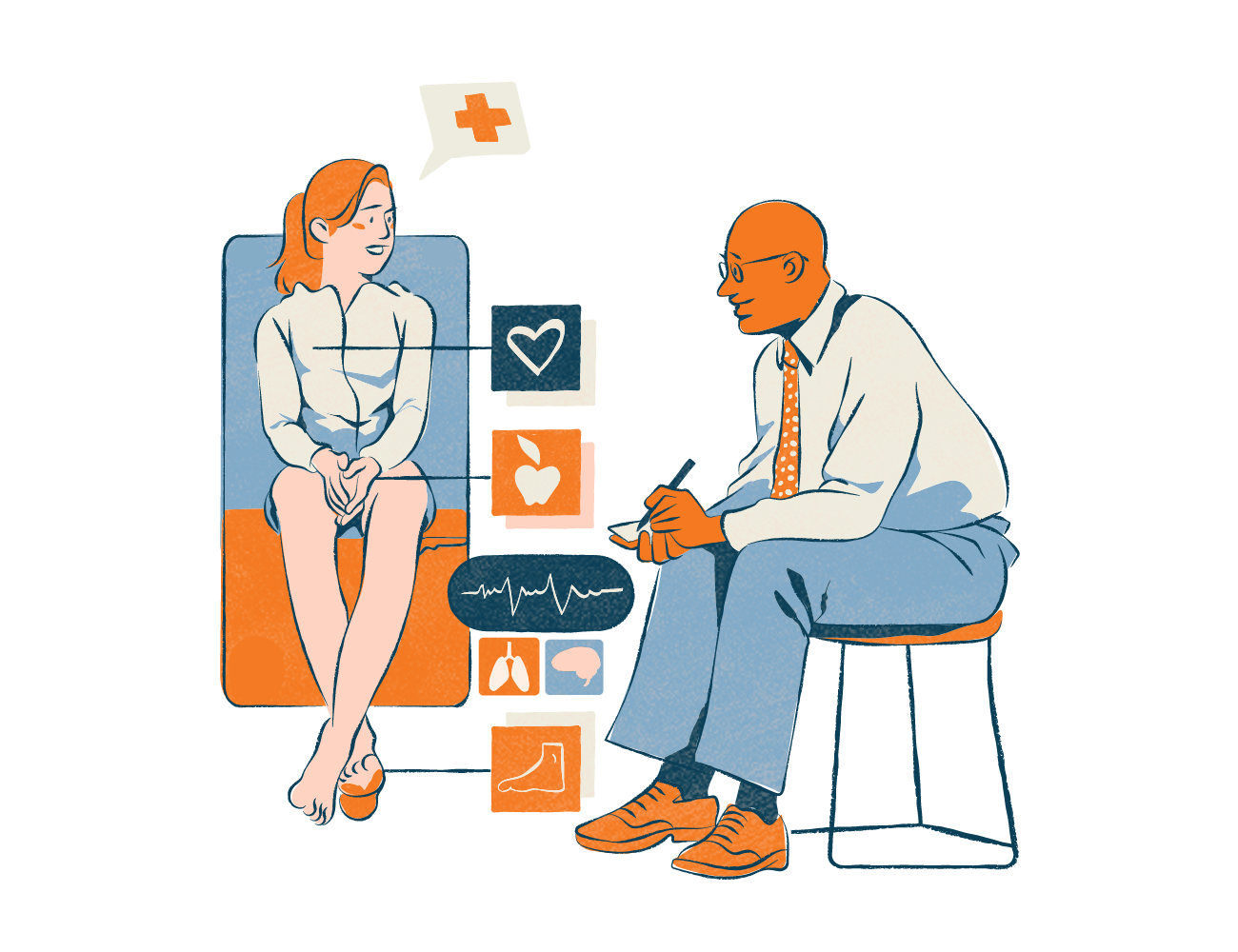In the past several weeks, new social distancing measures related to COVID-19 have temporarily moved employees around the world out of their normal workplaces and offices. As a result, remote work has exponentially increased, and it’s having a massive effect on employees’ work habits and lifestyle.
According to recent data from NordVPN Teams, a virtual private network provider, the average American adult is working three more hours each day (or 40% more) compared to patterns observed prior to March 11, 2020. Elsewhere, in Europe and Canada, employees are starting work earlier and averaging workdays that are two hours longer.

For employees used to working on-site, their home is likely ill-equipped to replicate their in-office experience. Roommates, family members, pets, and chores can prove to be distracting, while the lack of a dedicated workspace can become uncomfortable and create disorganization. As projects and communication transfer to online formats, many may find it difficult to “turn off” work as long as they are receiving incoming messages, blurring the distinction from “work time” to “personal time.” Ultimately, employees struggle to disconnect to relax and recharge, while others can’t complete tasks in a timely manner between interruptions.
Added COVID-19 Challenges
COVID-19 has further complicated remote work, even for workers that are already accustomed to regularly working off-site or at home.
As recreational facilities and businesses deemed “non-essential” close temporarily, people are putting their personal hobbies and activities on hold, creating less options on how they can spend their non-work time. For employees involved in the food, health, or shipping industries, a surge in the demand for goods and services may also be adding more work than current staff sizes can handle. With childcare and schools closed, many working parents are juggling teaching and care responsibilities throughout the day. The rise in unemployment also means other family members may be left without work or reduced income, adding additional burdens and straining finances and mental health. All these new stresses and responsibilities can drag out or expand the scope of work projects that employees are attempting to complete.
Help Employees Disconnect, Practice Healthy Habits
Working effectively from home involves changes that go beyond putting resources online or switching to video conferences. By being mindful of employees’ life beyond their jobs, companies can better support their workforce’s productivity, focus, and overall well-being.
- Allow for a period of adjustment. A sudden change like what many employees are experiencing can make daily life difficult—which is surprising, as many employees consider remote work options a welcomed benefit. Be understanding; if a task is more challenging at home, figure out ways to provide support, or try to accommodate a different timeline for a project. This may include training managers to operate differently.
- Avoid after-hours messages to restrict work hours. Create policies to eliminate after-hours communication, which can make it difficult for workers to respect their own personal time off and be detrimental to their overall productivity.
- Offer flexible hours. Schedule changes may be making an employee’s normal “9 to 5” routine unrealistic. Consider allowing a flexible work schedule so that personal or family responsibilities do not compete for attention with work.
- Be respectful of personal time. Make sure managers and those in leadership roles do not pressure employees to always be available just because communication has moved online, or just because they presumably may be at home more than normal.
- Emphasize the importance of time off. Encourage sick employees or those with other responsibilities to take advantage of time off, and remind them this is still an available even though they’re already at home.
- Encourage mindfulness. Providing resources to support mindfulness can help employees who struggle to focus on one thing at a time. Meditation, walks outside, or mindfulness apps can all train busy or stressed individuals to focus on one thing at a time.
- Support all areas of wellness. Financial concerns, caregiving responsibilities, and mental health issues are also on the rise during this public health crisis. By providing resources and tools that support an employee’s overall well-being, businesses can help their workforce handle life changes effectively. Happier, healthier employees do better work.












